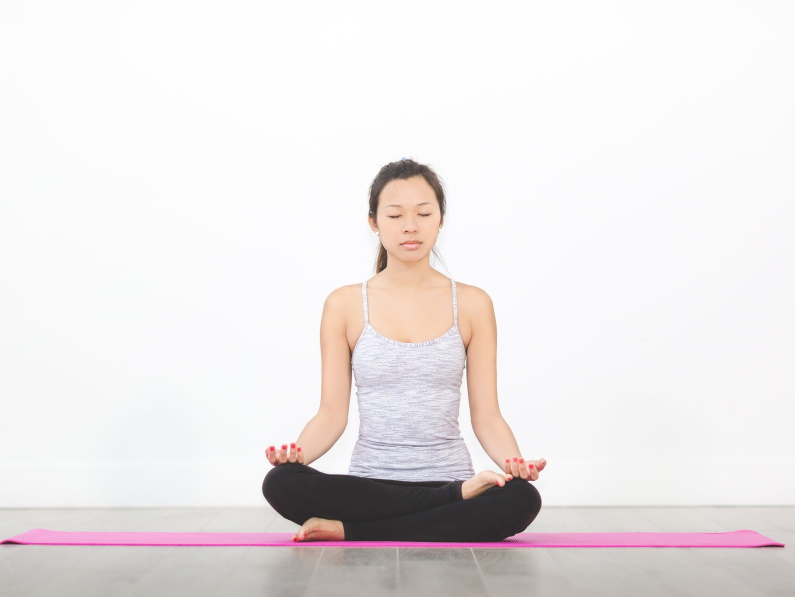Whether you’ve been doing yoga stretches for years or just picking it up now, you’re on the right track.
Yoga is a form of mental and physical exercise that is healthy and beneficial to the whole body. It consists of a series of stretches, meditations, and relaxation techniques that can bring inner peace and energy. Plus, yoga aids in the body’s flexibility, toning, and strengthening of muscles, and it can even lessen body aches.
Below are some tips to become familiar with so that your yoga session is a better experience.
Necessities
A yoga mat is essential. Sometimes your class will have extra mats; however, these mats can be loaded with germs and without the proper padding or grip that is needed for particular stretches. If you’re doing yoga on your own at home, you’ll still need a mat for the grip.
Stores also carry a small block called a yoga brick, which some people use to aid them with yoga stretches during class. It can help in certain yoga poses but is not absolutely necessary to have. A small towel and water bottle should always be by your side. Wear loose cotton clothing; a tee shirt or tank top with cotton pants is sufficient.
Be prepared to sweat at least a little bit. For comfort, hair should be tied back so it won’t fall in your eyes during stretches. Wear flip-flops to slip off as shoes are not worn in class.
Types of Classes for Yoga Stretches
Yoga usually starts off with a couple of minutes laying on your back with your eyes closed; this is called meditating. Depending on which type of yoga class you’re in, a series of stretches will follow meditation and end with another 5-10 minutes of it afterward. Power Yoga aims to get the heart rate up so the body sweats more, while Yoga Stretch focuses on poses that stretch and relax all the muscles. While there is plenty of stretching in Yoga Stretch, this category can be good for those just starting out. Bikram Yoga, or Hot Yoga, is when the temperature of the room is turned up to at least 90 degrees so that the body sweats profusely. Very little clothing is worn to this class.
Poses
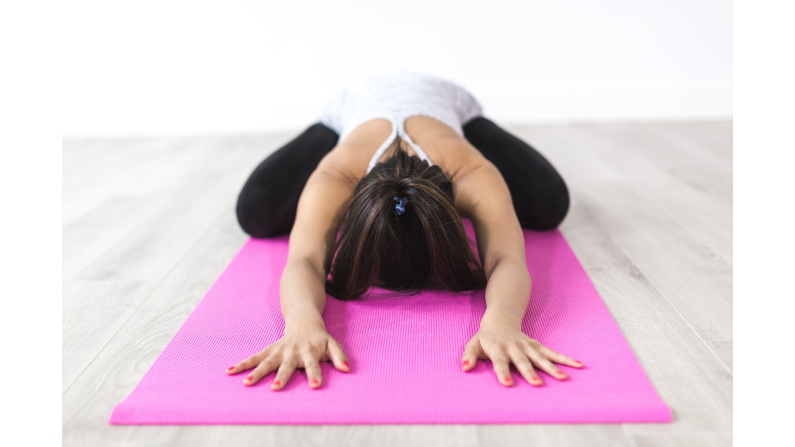
Child’s Pose
Usually, class begins and ends with the child’s pose. It is also used to rest in between vigorous stretches. Students are encouraged to revert to the child’s pose anytime they are feeling tired. While sitting on your knees with your legs tucked underneath you, bend your body completely forward so that your head is almost touching the ground. You can either keep your forearms stretched in front of you or keep them behind you parallel with your back. Keep your legs apart from each other and your head facing downward.
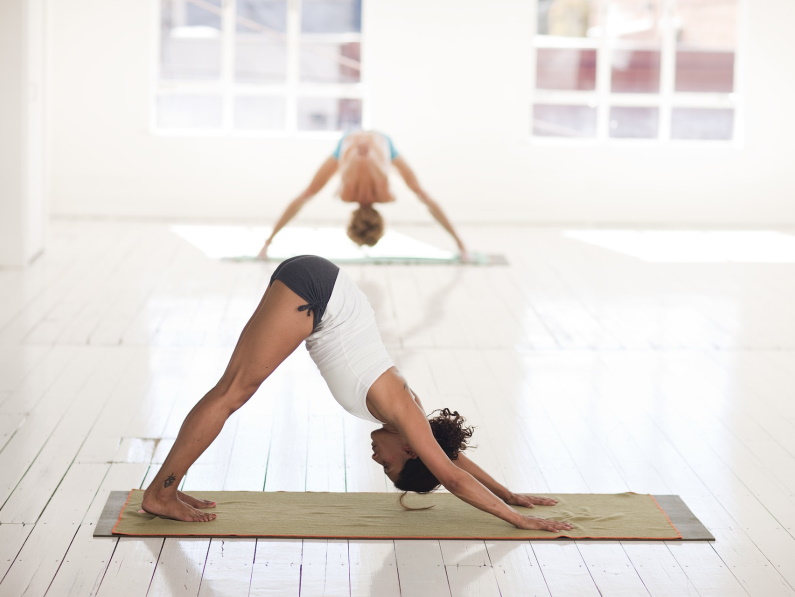
Downward-Facing Dog
While standing, bend over so the palms of your hands are planted firmly on the ground apart from each other. Move both feet back and apart from each other so now your body is shaped like an upside-down V. Keep your head facing down. In this position, you can transition to the child’s pose and vice versa.
Dolphin Pose
This pose is exactly the same as the downward-facing dog; however, instead of planting your palms firmly on the ground, rest your forearms completely flat on the ground so there is no pressure on the wrists. This position is good for people with carpal tunnel syndrome.
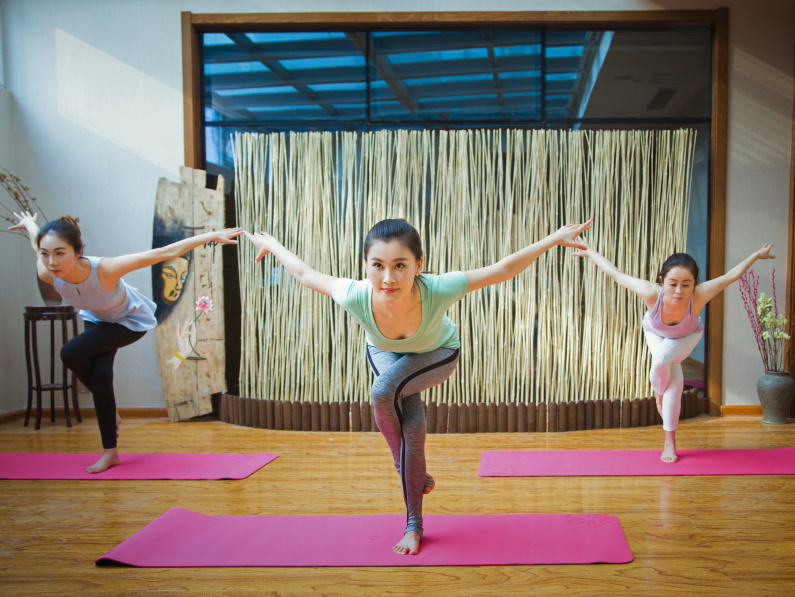
Eagle Pose
While standing, keep the knees slightly bent. Keeping the right foot on the ground, cross the left thigh over the right. Hook the left foot behind the right calf to hold the pose and try to balance on your right foot. If you are worried about balance, keep your arms straight out to each side. If you feel confident, with your hands put your forearms parallel to each other (hands pointing toward the ceiling). Now take your left arm and cross it in front of the right arm. Stretch so that the palms are touching each other. Make sure your fingers are pointing upwards. Switch feet and arms and do the same position.
Chair Pose
While standing, bend the knees slightly. Raise your arms all the way to the ceiling and keep your palms facing toward each other.
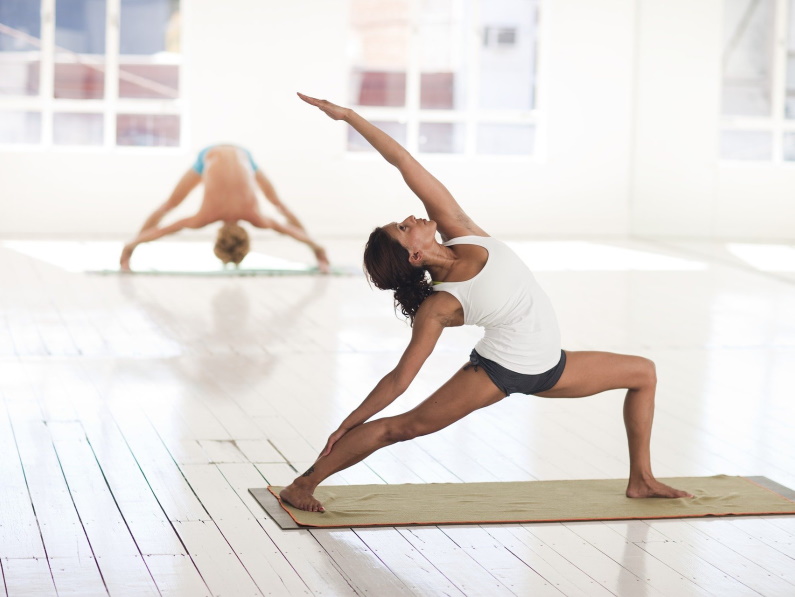
Warrior I, II and III Pose
1. While standing, place your right foot about 3 feet behind the left foot. Bend the left knee forward, while pointing your left foot straight in front of you and facing your right foot slightly to the right. Either keep your hands on your hips, lift your arms straight in front of you or above you with your hands pointed toward the sky. If you hold your arms in the last position, keep your head tilted upward.
2. While in Warrior I pose, take your arms so that the left arm is pointing straight ahead in front of you and the right arm is pointing towards the back. While doing this keep your head facing forward.
3. Now lift your right leg off the ground and bend your body forward while balancing on your left foot. Stretch both arms in front of you with your hands pointed and your palms facing each other.
Switch feet and repeat Warrior I, II, and III.
Wrapping Up Your Yoga Stretches
There are several variations of the poses above as well as many other positions altogether. But it’s helpful to get familiar with these basics in order to succeed in yoga class. Once you have these positions mastered, you will be able to move onto more challenging positions and get a better workout and overall body stretch.
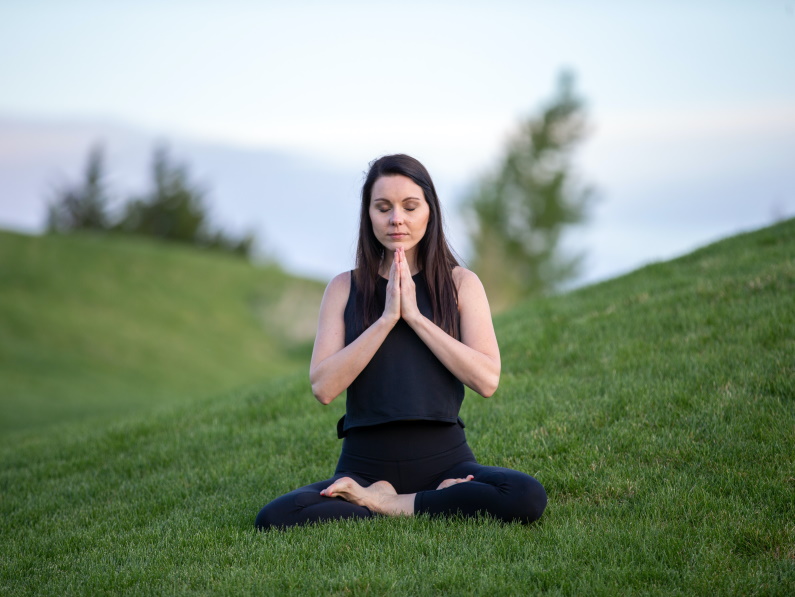
Meditation
Once the yoga stretches are complete, the instructor will ask the class to lay on their backs once again with their eyes closed and get as comfortable as possible. The instructor will turn the lights off and play some relaxing music so that your stress and negativity of the day and week will melt away. Meditation is a huge part of yoga, as relaxing the mind before and after stretching the muscles, brings more energy and inner peace to you.
Good luck!
